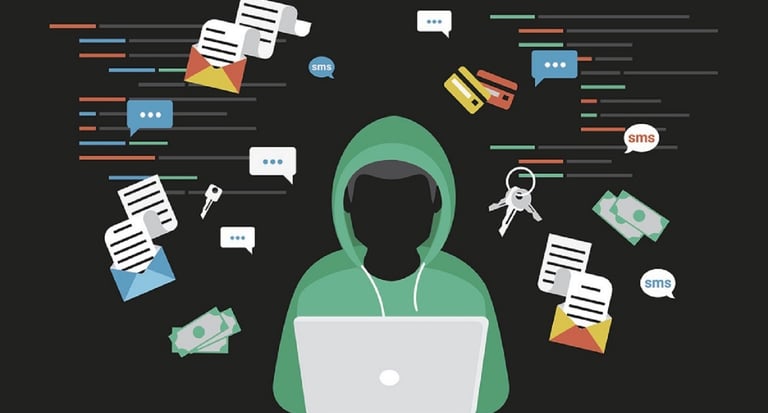🕵️♂️Get Up to 80% Off On All Products, StaySharp⚡
Unmasking Cyber Threats
Discover the most common cybersecurity threats and how to defend against them.
CYBERSECURITY
Phillemon Neluvhalani
4/18/20242 min read


Cybersecurity Threats looms large this days . As technology progresses, so too do the methods by which cybercriminals exploit vulnerabilities. Understanding the most common types of cyber threats and how to defend against them is critical for anyone using the internet today. Here, we break down these threats and provide practical strategies for safeguarding your digital life.
1. Phishing Attacks
What They Are: Phishing attacks occur when cybercriminals masquerade as trustworthy entities to deceive you into providing sensitive information like login credentials, credit card numbers, or social security numbers. These attacks often come in the form of deceptive emails, messages, or websites.
How to Defend:
- Be Skeptical: Verify the sender’s information before clicking on links or downloading attachments.
- Education and Awareness: Regular training sessions for employees on recognizing phishing tactics can mitigate risks.
- Use Anti-Phishing Tools: Many email services and internet security solutions offer tools designed to filter out phishing emails.
2. Ransomware
What It Is: Ransomware is a type of malicious software that encrypts a victim’s files. The attacker then demands a ransom from the victim to restore access to the data upon payment.
How to Defend:
- Regular Backups: Keep regular backups of all important files, and store them separately from your system to ensure they cannot be compromised.
- Update and Patch Systems: Ensure that all software is up-to-date to defend against known vulnerabilities that ransomware could exploit.
- Security Software: Employ comprehensive antivirus and anti-ransomware software to detect and block malware.
3. Malware
What It Is: Malware, or malicious software, refers to any program intentionally designed to cause damage to a computer, server, client, or computer network.
How to Defend:
- Use Antivirus Software: Install and keep up-to-date robust antivirus software to scan and remove malicious programs.
- Safe Browsing Habits: Avoid visiting unsecured or suspicious websites.
- Email Caution: Do not open emails or download attachments from unknown or suspicious sources.
4. Denial-of-Service Attacks
What They Are: These attacks aim to shut down a machine or network, making it inaccessible to its intended users by overwhelming the target with a flood of internet traffic.
How to Defend:
- Network Security: Enhance the security measures of your network infrastructure.
- Bandwidth Overprovisioning: Having more bandwidth than you typically need can help handle unexpected surges in traffic.
- DDoS Mitigation Services: Consider services from vendors that can absorb and scrub malicious traffic.
5. Insider Threats
What They Are: Threats that come from people within the organization, such as employees, former employees, contractors or business associates, who have inside information concerning the organization's security practices, data and computer systems.
How to Defend:
- Access Controls: Limit access to sensitive information to only those who need it.
- Monitor and Manage User Actions: Implement tools to track and log usage patterns that could predict potential insider threats.
- Conduct Regular Audits: Regular security audits and user activity reviews can detect and mitigate insider threats.
Threats are Evolving as Rapidly as the Technologies Designed to Combat Them. Staying informed about these threats and implementing a layered security strategy is essential for protecting personal and organizational assets. Regular updates, vigilant monitoring, and proactive defense measures are your best tools in ensuring that your digital domains remain secure in an increasingly connected world. Stay safe online by being proactive, aware, and prepared to respond to these cyber threats.


